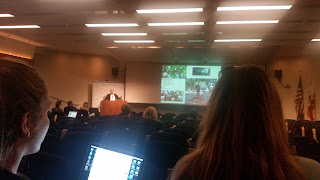Event 5- Toxics in Everyday Life

This was an interesting event since it was about the environment. In this class we never had the opportunity to discuss the environment that much. The main speaker I saw was Dr. Katie Pelch who works at Tedx. She talked about the Endocrine System and how it can be impacted by the environment. (Screenshot of the Confirmation Email) Tedx is different than Ted Talks and is more medical and environmental. Their mission is to, “prevent damage to individuals from the moment they are conceived through the balance of their lives by chemicals that can alter how their bodies are formed and function” (tedx.org). This is interesting in that rather than looking at people who suffer with this, they are trying to find ways to prevent it. This will help other future generations and will save more people. The endocrine system works with the nervous system and includes many glands. Dr. Pelch mentioned that some problems that those with unhealthy endocrine systems face are: Reproductio


